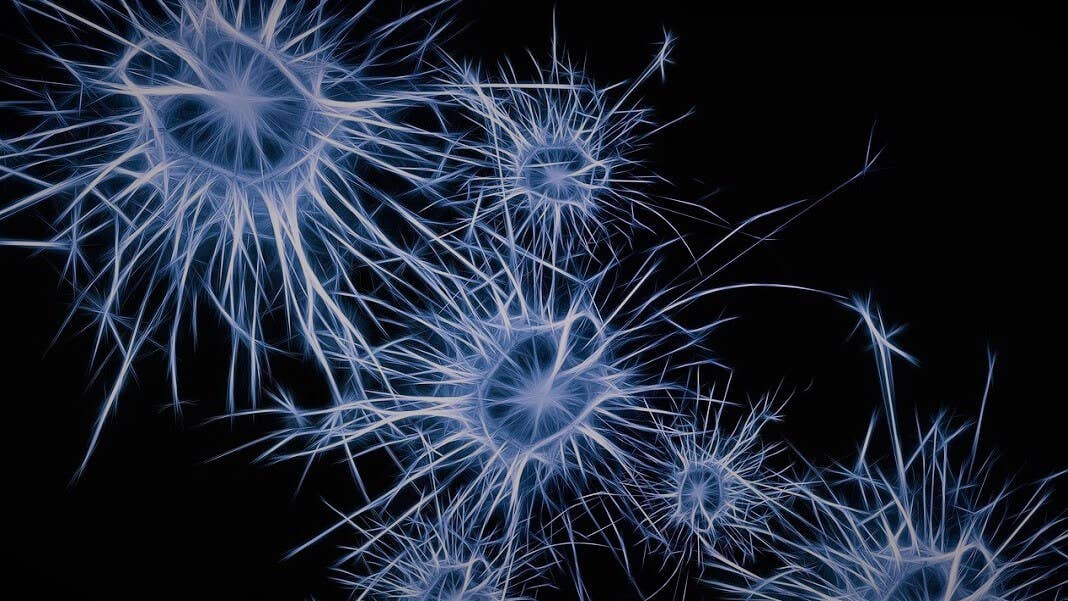A Nanowire Network That Mimics the Brain Could Inspire New Designs in AI

Share
The neural networks that power today’s leading AI systems can vastly outperform the human brain when it comes to picking out patterns in large tracts of static data. But when there’s little data to learn from or the data streams vary dynamically over time, they tend to struggle.
This is where the human brain shines, though, which has led many researchers to try to borrow some of its design principles to create new computing paradigms, a field known as neuromorphic computing.
And now researchers from the University of Sydney and Japan's National Institute for Material Science have shown they can use a random network of nanowires to replicate both the structure and the dynamics of the brain to solve simple processing tasks.
"What's so exciting about this result is that it suggests that these types of nanowire networks can be tuned into regimes with diverse, brain-like collective dynamics, which can be leveraged to optimize information processing,” said Zdenka Kuncic from the University of Sydney in a press release.
Today’s deep neural networks already mimic one aspect of the brain: its highly interconnected network of neurons. But artificial neurons behave very differently than biological ones, as they only carry out computations. In the brain, neurons are also able to remember their previous activity, which then influences their future behavior.
This in-built memory is a crucial aspect of how the brain processes information, and a major strand in neuromorphic engineering focuses on trying to recreate this functionality. This has resulted in a wide range of designs for so-called “memristors”: electrical components whose response depends on the previous signals they have been exposed to.
Memristive properties are also found at the junctions where silver nanowires overlap with each other, which has made them an increasingly popular target for neuromorphic engineers. They have the added benefit that they can self-assemble into complex networks—not unlike those found in the brain—with the memristive junctions acting somewhat like synapses between neurons.
In a paper in Nature Communications, the researchers describe how they created a random network of nanowires 10 micrometers long and no thicker than 500 nanometers and then subjected it to electrical stimulation.
As current passed through the network the memristive junctions switched on and off, altering the path the signal took. But the pattern of this switching varied considerably depending on the strength of the input signal. When the signal was low the pathways were very orderly and predictable, but when it was high they became completely chaotic.
To test if these dynamics could be used for information processing, the team created a simulation of the network and tried to teach it how to carry out a simple signal processing task—converting one waveform into another.
Be Part of the Future
Sign up to receive top stories about groundbreaking technologies and visionary thinkers from SingularityHub.


They adjusted the amplitude and frequency of the input to see if this would impact the performance and found that the network did best when the strength of the signal was right on the cusp of pushing the network into a chaotic state. That finding is intriguing, because it’s been speculated that the human brain operates in this regime too.
"Some theories in neuroscience suggest the human mind could operate at this edge of chaos, or what is called the critical state," said Kuncic. "Some neuroscientists think it is in this state where we achieve maximal brain performance."
Another alluring finding the researchers made was that the “edge-of-chaos” state was most powerful when trying to convert between the most dissimilar waveforms. This matches previous results and suggests that while the approach may not be efficient for simple tasks, it is particularly well-suited for more complex ones.
There’s a long way to go before these nanowire networks are anywhere close to matching the power of the human brain, though. The challenge the researchers set is very simple, and it’s so far only been demonstrated in a simulation of the network rather than the real thing. The extent to which this “edge-of-chaos” state is central to the way the brain works is also still far from settled.
But the results did give weight to the argument that nanowire networks could be a promising avenue for recreating the powerful and energy-efficient processing of the brain.
Image Credit: Gerd Altmann from Pixabay
Related Articles

Your ChatGPT Habit Could Depend on Nuclear Power

AI Can Now Design Proteins and DNA. Scientists Warn We Need Biosecurity Rules Before It’s Too Late.

This Light-Powered AI Chip Is 100x Faster Than a Top Nvidia GPU
What we’re reading
